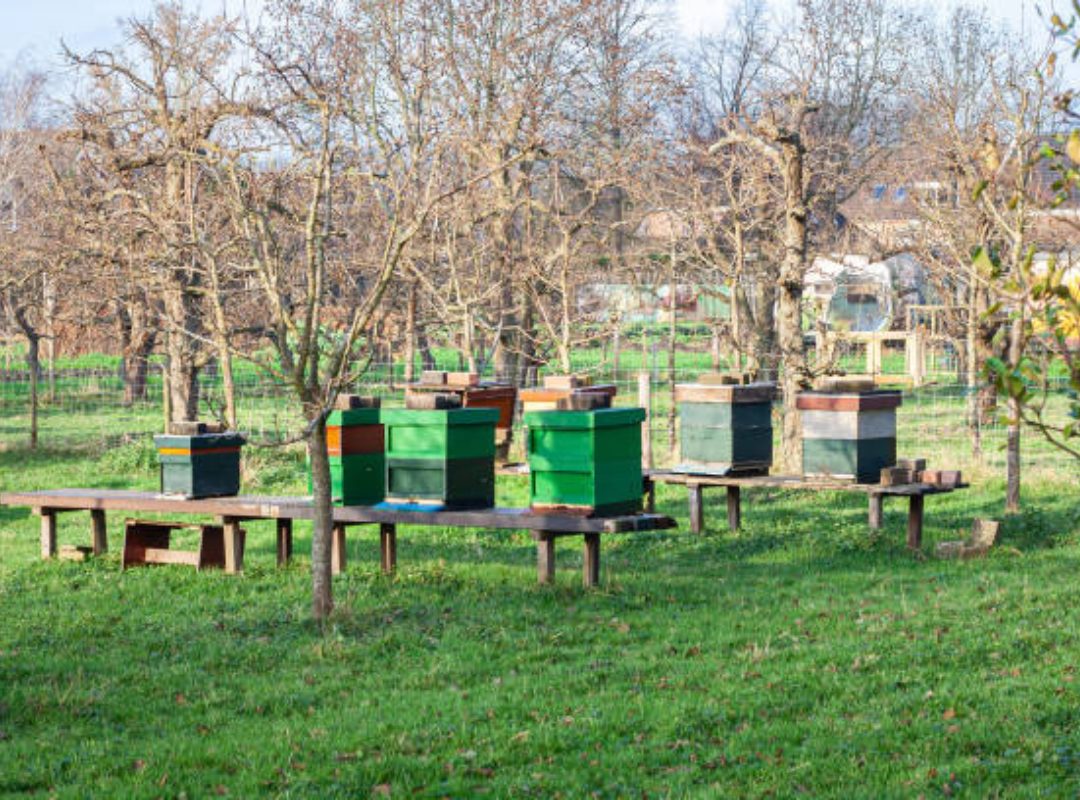Bees are an essential part of our ecosystem, playing a crucial role in pollination and biodiversity. However, their presence near play areas can be a safety concern, especially for children who may be allergic or fearful of stings. While traditional methods involve chemical repellents or extermination, there are eco-friendly ways to keep bees away that ensure both human safety and environmental protection.
In this article, we will explore sustainable and effective techniques to deter bees without harming them. From natural repellents to strategic landscaping, these solutions will help create a bee-free yet eco-conscious play area.
Why Bees Are Attracted to Play Areas
Before implementing prevention methods, it’s important to understand why bees are drawn to certain spaces. Bees seek out areas that provide food, water, and shelter. Playgrounds, gardens, and backyards often have blooming flowers, sweet-smelling drinks, and shaded spots—making them attractive to these pollinators.
Additionally, bright colors and floral scents can mimic flowers, further luring bees. Understanding these factors allows for the strategic modification of play areas to make them less appealing to bees while maintaining an environmentally friendly approach.
Natural Ways to Keep Bees Away Without Harming Them
Instead of resorting to harmful pesticides, consider these natural and eco-friendly ways to keep bees away from children’s play areas.
Plant Bee-Repelling Vegetation
Certain plants naturally deter bees due to their strong scent or chemical composition. Incorporating these plants around play areas can create a natural barrier against unwanted bee visits. Some effective bee-repelling plants include:
- Citronella – Known for repelling mosquitoes, citronella also deters bees with its strong fragrance.
- Peppermint – Bees dislike the smell of peppermint, making it a great natural deterrent.
- Marigolds – Their pungent odor keeps not only bees but also other insects away.
- Eucalyptus – The aroma of eucalyptus is unappealing to bees and other flying insects.
By strategically planting these around play areas, you can naturally reduce the number of bees without harming them.
Avoid Flowering Plants Near Playgrounds
While flowers add beauty to any outdoor space, they are a major attraction for bees. To prevent unwanted bee activity, avoid planting nectar-rich flowers close to play areas. Instead, opt for greenery that does not produce pollen or nectar, such as ferns, ornamental grasses, or evergreen shrubs.
If you still want flowers in your yard, consider placing them in a separate section, away from play zones. This allows you to enjoy a beautiful garden while keeping children’s spaces bee-free.
Use Natural Bee Repellents
Certain natural substances can help keep bees away without causing harm. These include:
- Cinnamon Powder – Sprinkling cinnamon around the play area creates an unwelcoming environment for bees.
- Cucumber Peels – The acidity in cucumber peels acts as a natural bee deterrent.
- Garlic Spray – Mixing crushed garlic with water and spraying it around the playground can discourage bees from hovering nearby.
These eco-friendly solutions are effective while ensuring the safety of both bees and children.
Safe and Reliable Bee Removal
If your play area has an active beehive or a recurring bee problem, it may be necessary to seek professional assistance. Instead of using harmful extermination methods, opt for safe and reliable bee removal in Orange County, which focuses on humane relocation. Experts in eco-friendly bee removal ensure that these valuable pollinators are safely transferred to a suitable habitat, preventing unnecessary harm while keeping your space bee-free.
Professional bee removal services assess the situation, identify hive locations, and implement non-lethal methods to remove bees. This approach not only protects children but also contributes to the conservation of bee populations.
More Ways to Keep Bees Away from Play Areas
Keep Food and Drinks Covered
Sweet foods, juices, and sodas can attract bees, especially during warmer months. To minimize bee presence:
- Keep food in sealed containers.
- Use cups with lids for beverages.
- Clean up spills and food crumbs immediately.
By eliminating food sources, you significantly reduce the chances of bees lingering around play areas.
Create a Decoy Bee Habitat
Providing an alternative space for bees can redirect them away from playgrounds. Setting up a small pollinator garden in a distant part of your yard, filled with nectar-rich flowers, can attract bees and keep them away from children’s spaces.
Additionally, placing a small water source like a shallow dish with pebbles can encourage bees to stay in their designated area rather than searching for water near play zones.
Use Essential Oils to Repel Bees
Bees are sensitive to certain essential oils. A simple way to keep bees away is by using oils such as:
- Lemongrass Oil
- Tea Tree Oil
- Clove Oil
Mixing these oils with water and spraying them around the play area creates an invisible barrier that discourages bees from approaching. These oils have a pleasant scent and can double as natural air fresheners.
Install Bee-Proof Barriers
Physical barriers can effectively prevent bees from accessing play areas. Consider installing:
- Mesh Screens – Placing fine mesh around patios or play structures can keep bees out.
- Netting Over Sandboxes – Covering sandboxes when not in use prevents bees from nesting inside.
- Gazebos with Curtains – Enclosed play areas can serve as a protective space against flying insects.
By incorporating these barriers, you create a bee-free zone while maintaining an eco-friendly outdoor space.
Final Thoughts
Keeping bees away from play areas does not mean harming them. By using eco-friendly ways to keep bees away, you can create a safe outdoor space for children while respecting nature. Strategies such as planting repellent vegetation, using natural deterrents, and seeking professional bee relocation services help maintain a balance between human comfort and environmental responsibility.
By implementing these methods, you not only protect children from potential bee stings but also contribute to the conservation of these vital pollinators. A thoughtful, eco-conscious approach ensures that both kids and bees can coexist harmoniously in our outdoor spaces.
